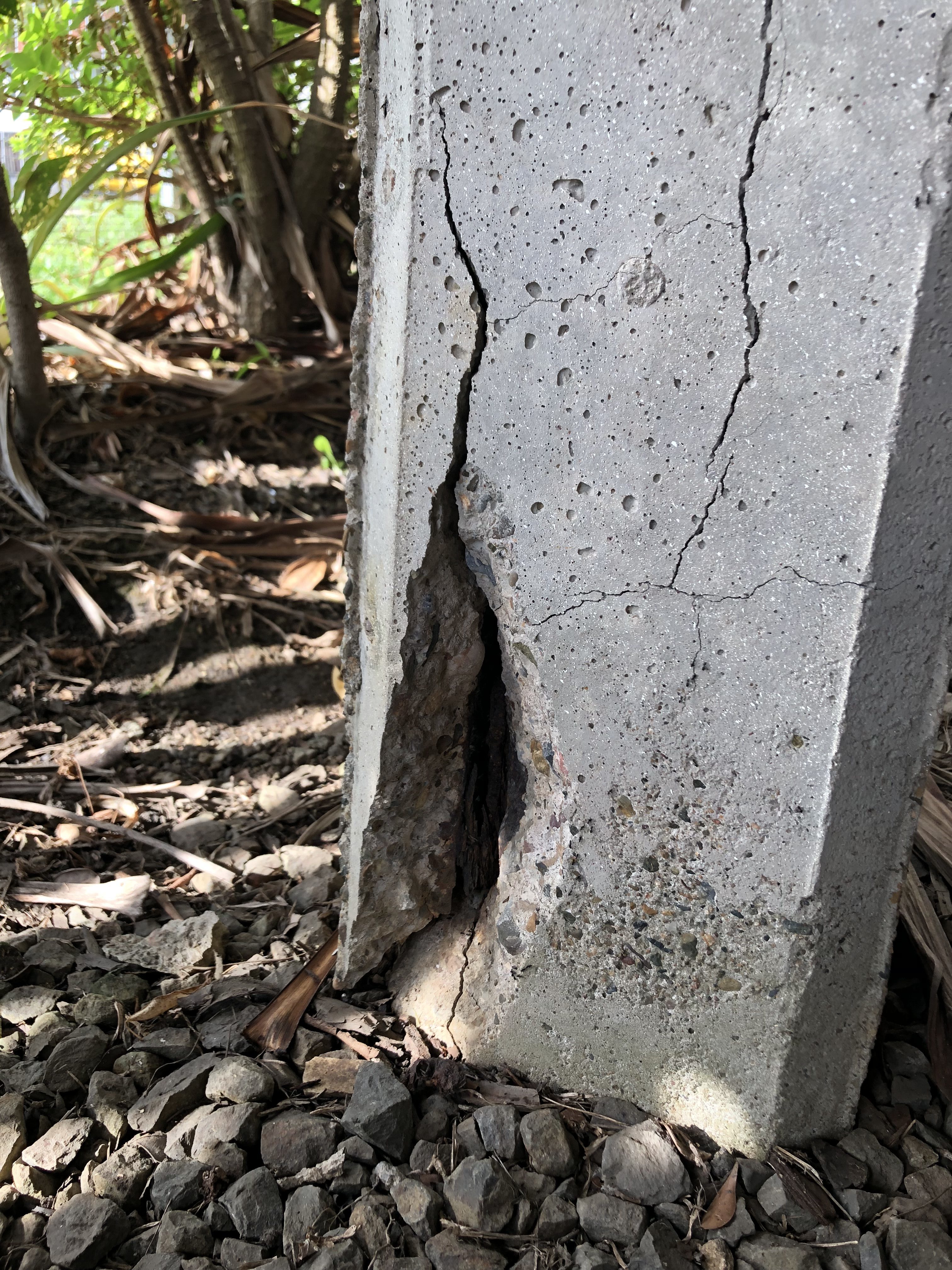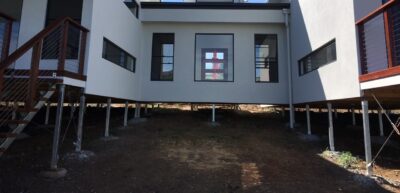Beware of Concrete Cancer in House Stumps
The Unseen Damages of Stump Concrete Cancer

Concrete cancer is the term used to describe the spalling and degradation of concrete. Many people believe that rebar cannot corrode when it has been encased in concrete. What many don’t know is that concrete is a porous material and as such allows some water and air to seep through. Once water has contacted the re-bar sitting inside the concrete, it naturally starts to rust. This rusting starts if:
- Poorly treated rebar was used during construction.
- Rebar is located too close to the surface of the concrete.
- The concrete was of poor quality allowing air pockets to form.
- There were any existing cracks in the concrete from bad workmanship.
- Water was left pooling on the concrete letting it seep in.
Once the steel inside the concrete starts to rust it will also start to expand. Naturally, this stresses the concrete and starts to create larger fractures and spalling. The knock-on effect is this allows in more air and water further worsening the issue. This speeding up of the corrosion is where it gets the cancer part of its name. Buildings near the ocean are more prone to concrete cancer as the saltwater in the air can also enter the concrete. This is concerning as over 80% of Australians live within 50 kilometers of a beach. Other environmental factors such as earth movement can also cause initial cracking in the concrete. Concrete cancer leads to a weakened slab or pillar with either cosmetic or serious structural damage that needs to be professionally addressed.
Real World Damage
The images provided were taken on a job where the stumps were replaced with LevelMaster products. The site was located in Wynnum QLD and the cracked stumps were only 6 years old. The damage to these stumps was extensive and show the scary power behind concrete cracking. It is worth noting that the damage is not limited to what can be seen from the outside and runs deep in the concrete. Contact us at Levelmaster if you think you have concrete cancer we are experts in house stumps.



